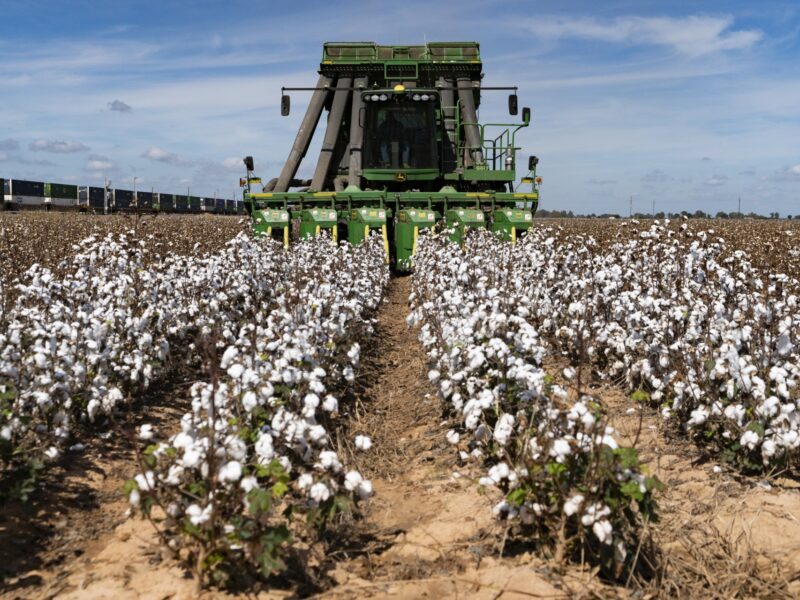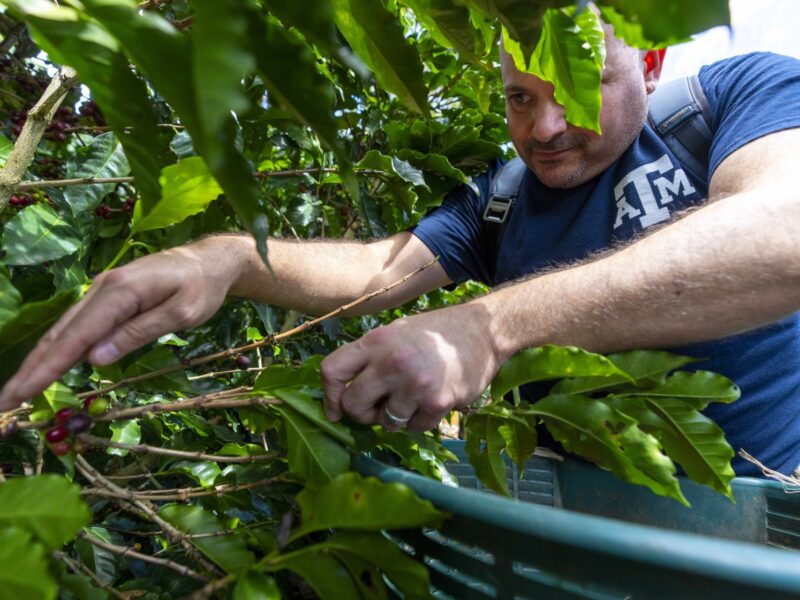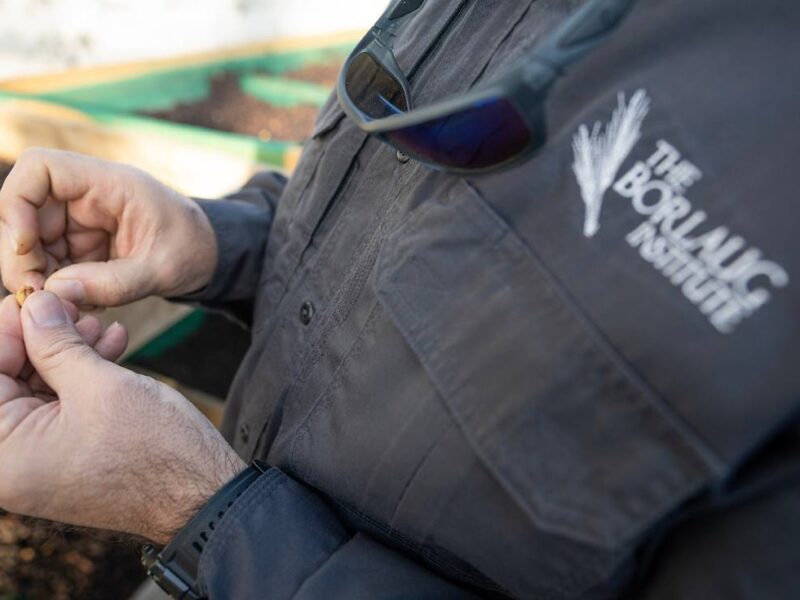Digital Agriculture Connects Dots For Crop Improvement
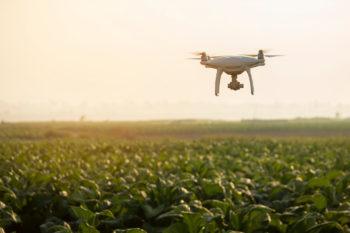
Crop production is getting a boost thanks to high-tech methods of collecting, managing and analyzing data being used by Texas A&M AgriLife researchers and others.
“Researchers with Texas A&M AgriLife Research, along with Texas A&M AgriLife Extension Service agents and experts at Texas A&M University-Corpus Christi and Purdue University, have been creating a platform for collecting and analyzing data from images provided by unmanned aerial vehicles,” said Juan Landivar, director for the Texas A&M AgriLife Research and Extension Center at Corpus Christi. “This process of gathering ‘big data’ for analysis and interpretation for practical application on the farm can be used toward the improvement of various agricultural crops.”
Initial development of that platform, now the cornerstone of the Texas A&M AgriLife Digital Agricultural Program (DAP), was supported by funding from Cotton Incorporated, Landivar said. This funding made it possible for researchers to collaborate with digital experts to investigate and develop ways for improving cotton production.
“Funding from Cotton Incorporated not only got us started with the research, but it also gave us traction that allowed us to get additional funding through grants and from other sources,” he said.
Landivar said in addition to the work DAP has done toward enhancing cotton production, it has also begun to use similar technology for data collection, analysis and interpretation to help improve wheat and vegetable production in Texas.
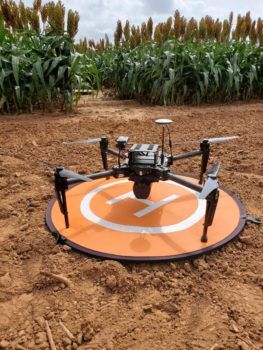
Using Drones For Agricultural Production
“Using drones allows us to obtain high-resolution images, obtain accurate measurements, develop helpful algorithms, determine patterns within crops and get a more complete picture of overall crop development,” Landivar said.
In relation to cotton improvement, Texas A&M AgriLife researchers have been using the drones’ remote sensing imagery to measure patterns of cotton plant canopy growth, plant maturity, leaf drop, open bolls and areas damaged by weather or disease.
“Proper analysis and application of such data can be used to make important crop management decisions that can improve both quality and yield,” Landivar said. “Before this technology, producers and researchers spent a lot of time walking through the fields looking for evidence of insect or disease pressure, checking on how well a crop was developing and trying to determine the right time for applications. Now real-time data crucial to production decision-making can be relayed directly to the producer.”
Remote-sensing technology allows producers to quickly and accurately measure the spatial variability of every square foot of a planted field, Landivar said. In as little as a half-hour of flight time, it is possible to map a 100-acre field and create 3D models of the plants.
“With ever-increasing production costs and tight margins, producer inputs will need to be carefully watched moving forward,” said Murilo Maeda, an AgriLife Extension cotton specialist based in Lubbock and member of the DAP team. “These technologies will help them ensure finite resources are being responsibly managed within the production agriculture context.”
Maeda said remote-sensing technology, especially when coupled with advanced simulation and artificial intelligence models, presents a great opportunity to manage risk by adjusting crop management to realistic yield goals as the season progresses.
“Having the ability to not only measure and quantify, but also show the impact of different management practices on crop response is invaluable,” Maeda said. “We’d like to be able to fully incorporate this technology into AgriLife Extension education so farmers throughout Texas can benefit from this technology that, in my opinion, will eventually change the way we do agriculture research and crop management.”
Using Data For Crop Improvement
Landivar said a vital component of digital agriculture is the storage and management of huge amounts of data so that it can be analyzed and interpreted in practical ways to benefit the producer.
AgriLife researchers have been indispensable in taking the images provided by drones and turning them into numbers and data that will work on the farm, said Ed Barnes, senior director of agricultural and environmental research at Cotton Incorporated.
“Producers don’t have the time to leisurely browse images,” Barnes said. “They need to be able to get the information they need in an easy and usable way. Dr. Landivar’s team has really put in the legwork and developed software to utilize this data.”
Barnes said imagery on crops extracted from drones has provided useful data that can be translated into practical action in the field.
“For example, with cotton you can look at things like plant canopy cover at different times to help determine crop development,” he said. “This can also help the producer determine when to add chemical or other inputs. It can also be used in conjunction with satellite imagery to provide even greater detail and more layers of helpful data.”
Barnes also noted multispectral imagery can be used to determine relative crop vigor as well as crop size and height.
“The use of multispectral imagery, combined with some well-fertilized strips in the field, will also allow producers to get an idea of the degree of nutrient stress throughout the field,” he said. “This will give them more direction as to what specific areas of the field may or may not require fertilization.”
The DAP team has recently been working on using remote-sensing data to estimate the time and rate of harvest-aid application for cotton, Landivar said.
“The investigation aims to explore the feasibility of using crop health status in the form of vegetative indexes as estimated via remote sensing,” he said. “Then we will see if we can use that information to estimate cotton crop maturity.”
He said potential benefits to the cotton industry could include a lower trash content in cotton modules, more efficient ginning, a higher lint percentage, improvement in grade and an equal or reduced cost of defoliation.
“For instance, we discovered the Excessive Greenness Index could be used to estimate time and rate of defoliation,” Landivar said. “We noted a specific range in the boll-open stage that corresponded with a specific greenness index range and determined at what point in that range defoliants could be applied most effectively.”
He said the results of this research meant greenness index values can be used to adjust harvest-aid rates and the Excessive Greenness Index can be used to develop management zones for prescription application of harvest aids.
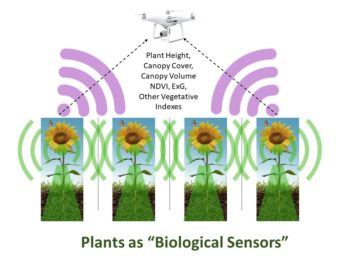
Future Advancement
Landivar said advanced imagery, such as multispectral or hyperspectral imagery, can also be applied for even more specific structural identifications and distinctions that may improve crop production.
“These more advanced technological tools can be used to gather and incorporate even more — and more useful — information that can be integrated into the models currently being developed for application in crop improvement,” he said.
Landivar said center researchers will continue to further improve and develop their own agricultural production improvement models and work to expand DAP.
“We hope to collaborate with other AgriLife centers and agents throughout the state to demonstrate how digital agriculture can be of use to the agricultural producers they serve,” he said.
In coming years the center hopes to further expand the collaboration with the cotton industry, involve other agricultural commodity groups and develop more connections with universities interested in advancing digital agriculture, Landivar said.
“We also hope to collaborate with tech companies in developing drones that can take ultra-high-quality images, specialized software, aerial mapping tools and cloud-computing and storage platforms that can be used in the effort to improve agricultural crop production,” Landivar said. “I believe we are only scratching the surface of the full potential of digital agriculture and how it can benefit those involved in agricultural production.”
This article by Paul Schattenberg originally appeared on AgriLife Today.
